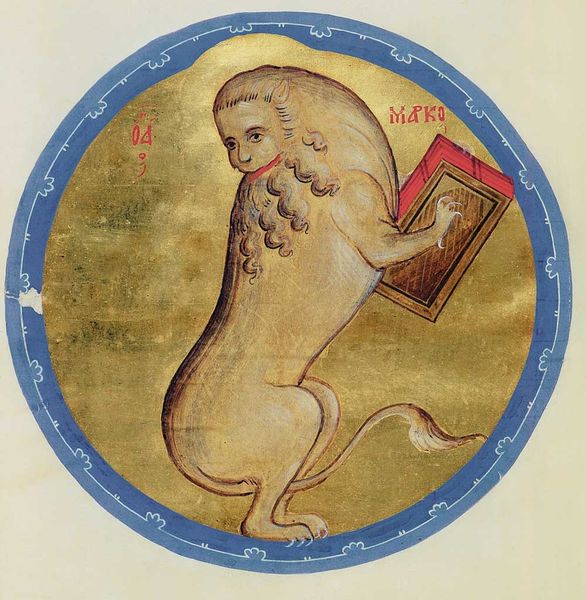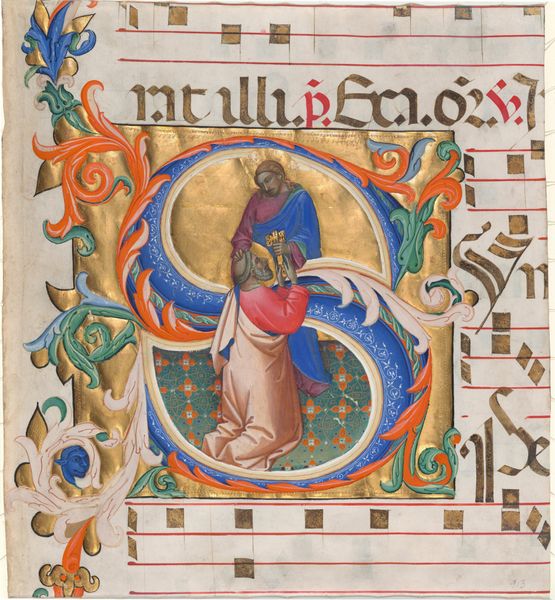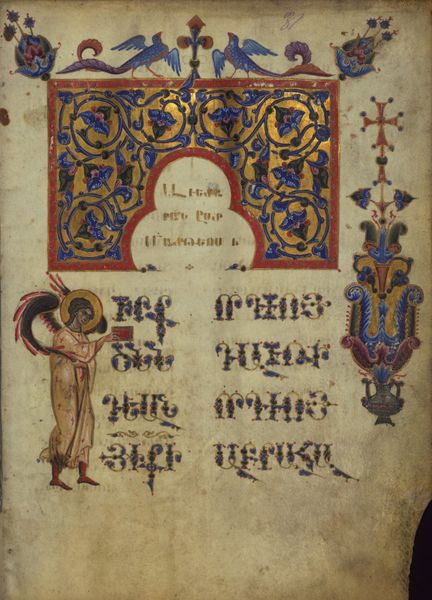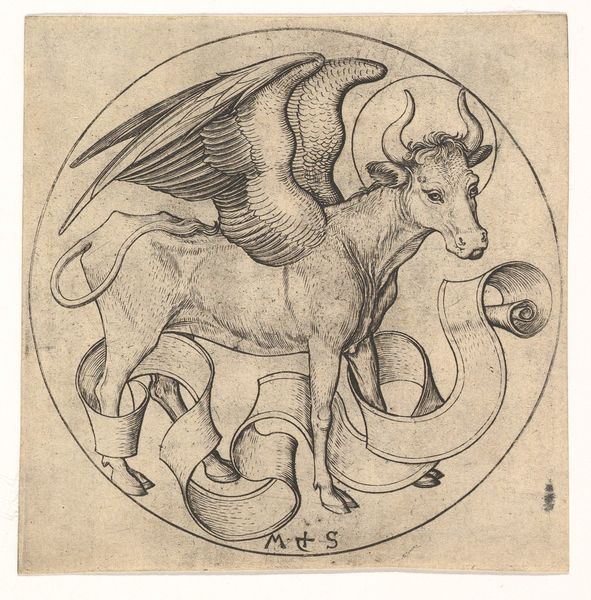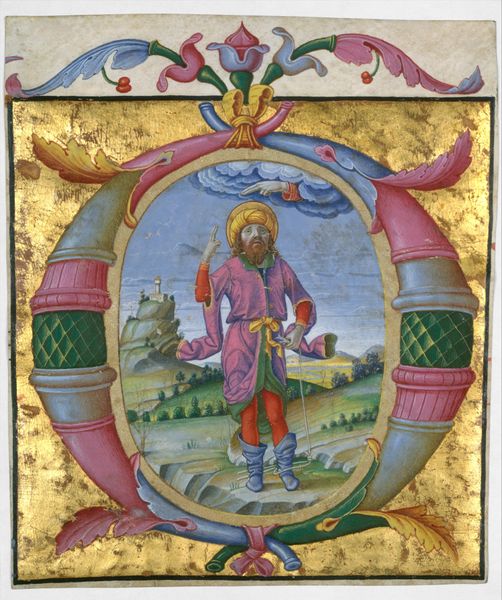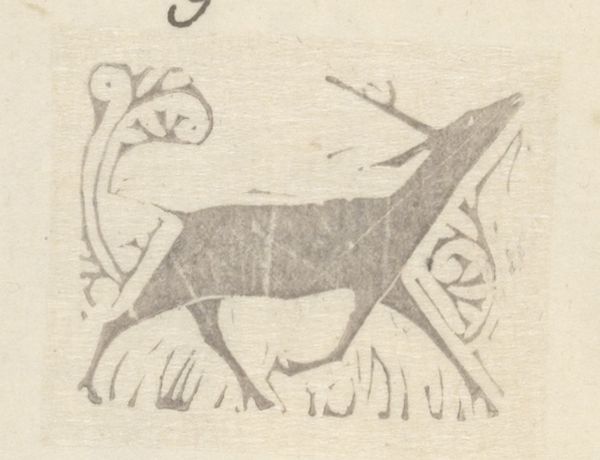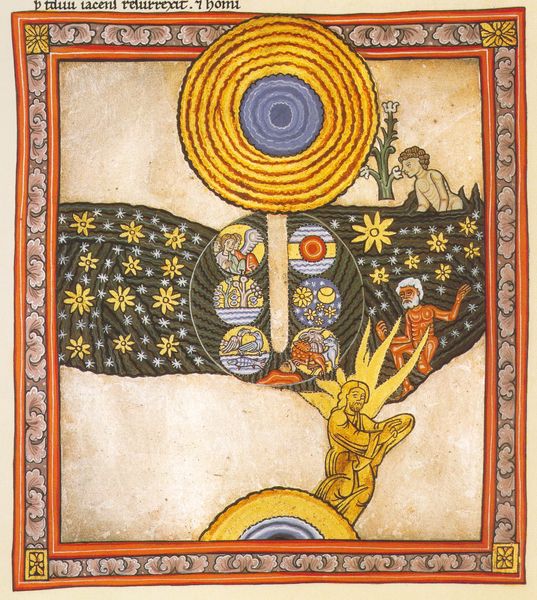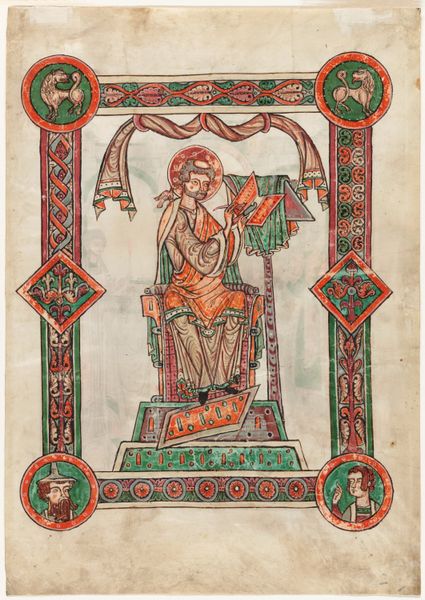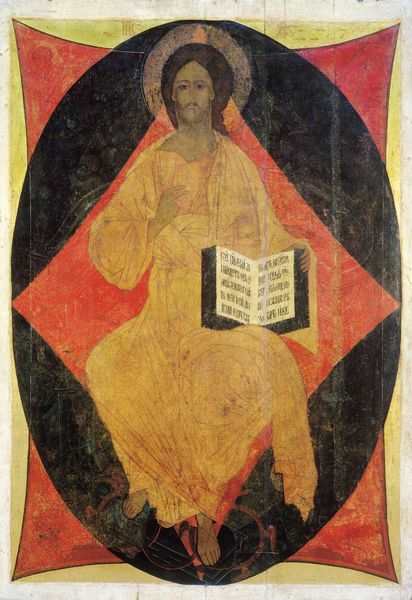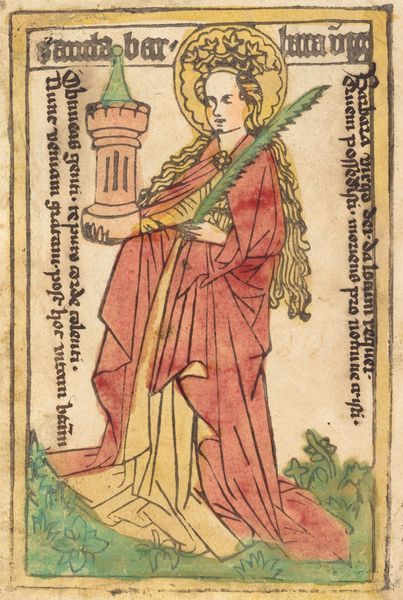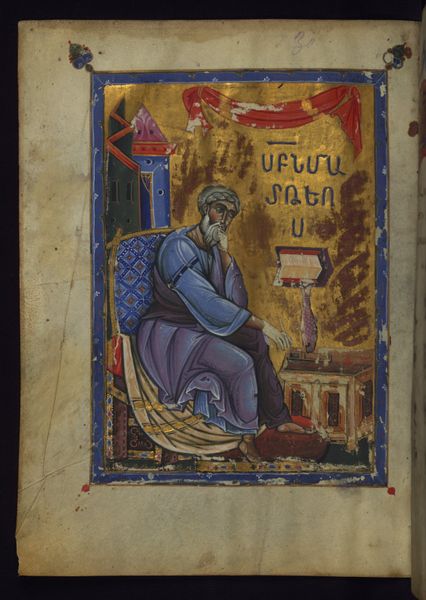
tempera, painting
#
byzantine-art
#
medieval
#
water colours
#
tempera
#
painting
#
figuration
#
coloured pencil
#
christianity
#
miniature
#
watercolor
Copyright: Public domain
Andrei Rublev painted ‘The Calf of St. Luke’ in Russia, likely in the early 15th century. Rublev was a monk, and his art served a public role within the church, particularly in the context of rising Muscovite power. Here, the calf is a symbol of Saint Luke, one of the four evangelists, and this image would have formed part of a sacred, illuminated text. The visual codes are highly conventional, but Rublev subtly reworks them. Icons and images of evangelists played a crucial role in Russian Orthodox worship, symbolizing divine authority. The church was a major political and economic force, and artists like Rublev worked within that institutional framework. However, we might also see Rublev's work as subtly progressive. By softening the traditional imagery, he could invite a more personal, emotional connection to faith, perhaps questioning the rigid hierarchies of the church. To fully understand Rublev, we delve into theological texts, historical records, and the specific traditions of Russian icon painting. Art becomes meaningful through its ever-evolving social and institutional context.
Comments
No comments
Be the first to comment and join the conversation on the ultimate creative platform.
